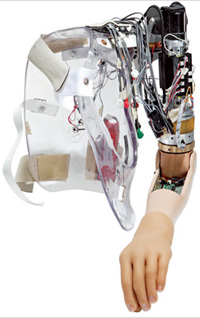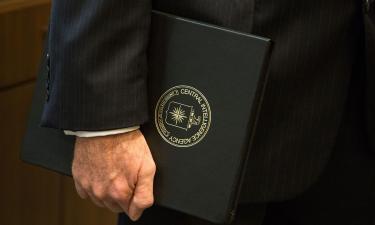Modern medicine offers Terminator’s bionic arm for 170,000 USD
The notorious Freddie Kruger from the horror classic The Nightmare on Elm Street is likely to cross one’s mind when the issue of bionic prostheses is mentioned. However, coping with a daily reality can be a lot scarier than any horror flick for those who have lost their arms in an accident or disease. The Pentagon has recently unveiled a bold plan aimed at developing a bionic prosthetic arm by 2009. U.S. scientists hope to build an artificial limb that would look and function as a real human arm. The laboratory of applied physics at John Hopkins University is about to launch research pertinent to the project. Experts estimate the cost of the project in the neighborhood of $55 million.

“The research conducted in the field of applied bionics is not by any means a pioneering effort,” says Doctor of Biology Olga Silayeva, senior researcher at the Institute of Ecology and Evolution of the Russian Academy of Science. “The work in this area has started back in the 1960s and 1970s in many countries,” adds Silayeva. Jessie Sullivan from Tennessee became the first bionic man. The 58-year-old electrician lost both his arms due to a tragic accident six years ago.
Six months later, he was offered a chance to test a new bionic prosthesis controlled by nerve impulses. The offer came from a Chicago-based rehabilitation institute. These days Sullivan can use his artificial arms for eating, putting on socks, and shaving his face. He can even use them for doing a few things in his garden. Sullivan’s right arm prosthesis is a traditional device while his left one is a bionic limb. According to him, the old and the new technologies do not clash. On the contrary, they compliment one another. Sullivan uses the right arm for doing more simple things e.g. lifting heavy objects. His bionic device is used for movements that require delicacy and precision. Scientists in Chicago are presently working on special sensors, which would help enhance the dactylic sensations of the patient.
Doctors at Margaret Rose Hospital in Edinburgh, Scotland, successfully tested their own version of a bionic arm prosthesis nearly at the same time. A complex device was implanted to the 52-year-old restaurant proprietor Campbell Ayrde who lost his arm 16 years earlier due to cancer of muscle tissues. The demonstration of the bionic limb was a spectacular success. Campbell was using his artificial limb with such an amazing aptitude as though he had forgot that his arm was, in fact, a prosthesis. According to him, the bionic arm enabled him to indulge in piloting his sports airplane and shooting, two of his most favorite hobbies.
“The special sensors are attached to the nerve endings on the remaining muscles. The nerve impulses come into the prosthesis’ minicomputer, which is capable of “guessing” the patient’s desires after analyzing the signals. The movements are controlled by the minicomputer using feedback sensors. The pressure sensors are located on the tips of the silicone fingers. Actually, the prosthetic is called ‘bionic’ because it effectively restores the biological functioning of a limb.” For aesthetic purposes, modern silicone prosthetic devices normally copycat the real body parts. The artificial skin made of rubber or silicone looks almost like the real human skin. All sorts of hues and shades of the color scheme are available upon the request of the patient. The cost of the prosthesis presently stands at about $170 thousand. However, the designers are hopeful that the technology will eventually become more affordable to the common patient.
The designers are currently upgrading the device. They are planning to unveil the new “arm” at the late of 2006. The new model should come less complex in terms of design and use, and cost a little less than it does now.
“Researchers also use the bionic technology for making prostheses to substitute other organs of the human body,” says Dr. Silayeva. “The 69-year-old Professor Graham Clark from Melbourne was awarded a cash prize amounting to $300 thousand by the Australian prime minister two years ago. He also won the title of Father of the Year. The scientist seems to have earned every penny of that award: it took him 35 years to build the hearing aid – a bionic implant that enabled some 55 thousand patients around the globe to hear again.”
The bionic ear operates on the basis of the so-called growth factors, which help fix the damaged nerve cells. By using special techniques, scientists managed to get DNA to produce proteins that can virtually rejuvenate the cell during a limited amount of time.
In a statement for the press, Prof. Clark said that he intended to spend the prize money in order to keep the research going. The scientist is presently searching for ways to use his technology for treatment of patients who sustained injuries of the spinal cord. Several days ago, a team of scientists headed by Daniel Palanker at Stanford University issued a statement to announce the completion of the bionic eye project, which could raise hopes for scores of people who have lost their eyesight.
Trud
Translated by Guerman Grachev
Pravda.Ru
Discuss this article on Pravda.Ru English Forum
Subscribe to Pravda.Ru Telegram channel, Facebook, RSS!




